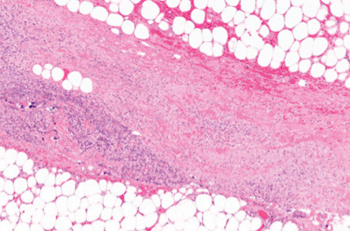Asparagine Metabolism Empowers Group A Streptococcus Infection
By LabMedica International staff writers
Posted on 30 Jan 2014
The bacteria that cause the frightening syndrome called "flesh-eating disease" have been found to be stimulated by the amino acid asparagine and inhibited by the chemotherapeutic enzyme asparaginase, which destroys asparagine.Posted on 30 Jan 2014
Necrotizing fasciitis or NF, commonly known as "flesh-eating disease" is a rare infection of the deeper layers of skin and subcutaneous tissues, which quickly spreads across the fascial plane within the subcutaneous tissue. Individuals having compromised immune systems (due to conditions like diabetes, cancer, etc.) have greater risk of developing NF. It is a severe disease of sudden onset and is usually treated immediately with high doses of intravenous antibiotics. "Flesh-eating disease" is a misnomer, as the bacteria involved—most frequently Streptococcus pyogenes, or Group A Streptococcus (GAS)—do not actually "eat" the tissue. They cause the destruction of skin and muscle by releasing toxins, which include streptococcal pyogenic exotoxins.
Investigators at the Hebrew University of Jerusalem (Israel) reported in the January 16, 2014, issue of the journal Cell that during adherence to host cells, GAS releases streptolysin toxins, which create endoplasmic reticulum stress in the host cells. This stress causes an increase in the expression of the enzyme asparagine synthetase and the production of asparagine. The released asparagine is sensed by the bacteria, which induces altered expression of about 17% of the bacterial genes.
Asparaginase, a widely used chemotherapeutic agent, was found to block GAS growth in human blood and prevented GAS proliferation in a mouse model. To date asparaginase has not been used to treat GAS infections.
The Yissum Research Development Company (Jerusalem, Israel), the technology transfer arm of the Hebrew University of Jerusalem, has registered a patent for this discovery and is seeking commercial partners to help develop effective therapies against invasive Streptococcus infections.
Related Links:
Hebrew University of Jerusalem
Yissum Research Development Company



![Image: Photomicrograph (900x) of Streptococcus pyogenes bacteria, viewed using Pappenheim\'s stain (Photo courtesy of the CDC - [US] Centers for Disease Control and Prevention). Image: Photomicrograph (900x) of Streptococcus pyogenes bacteria, viewed using Pappenheim\'s stain (Photo courtesy of the CDC - [US] Centers for Disease Control and Prevention).](https://globetechcdn.com/mobile_labmedica/images/stories/articles/article_images/2014-01-30/GMS-020a.gif)











